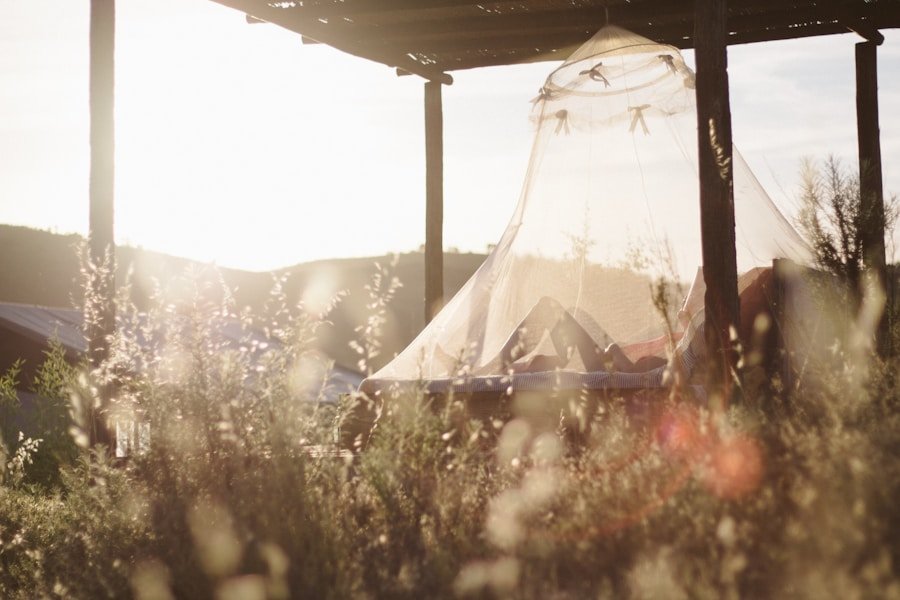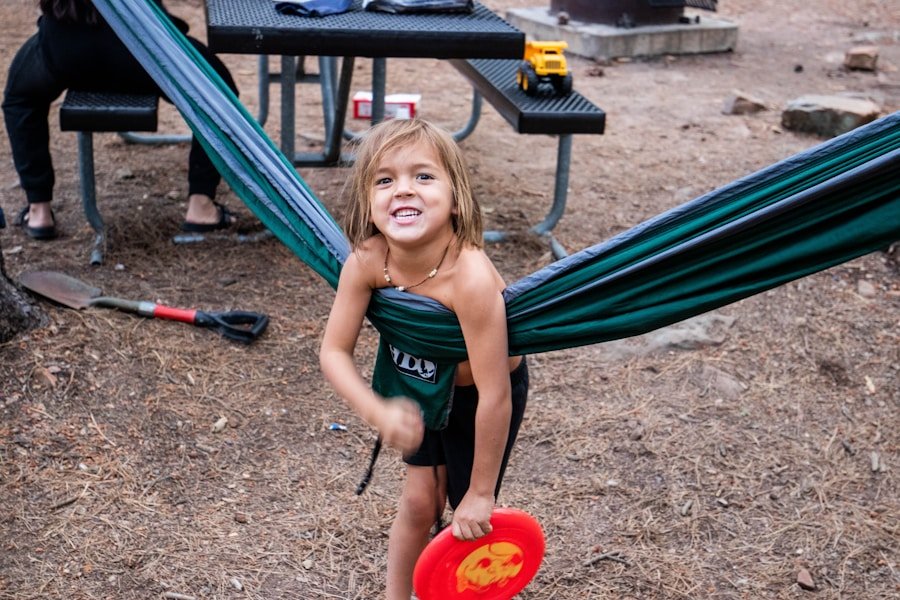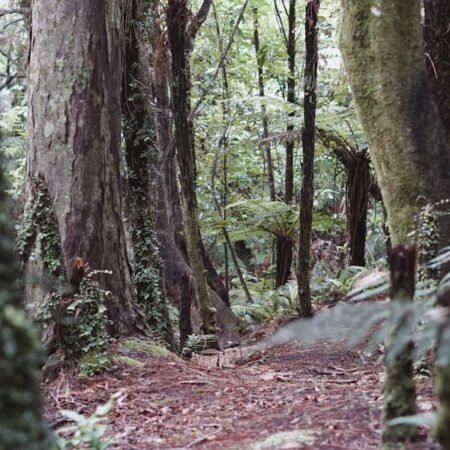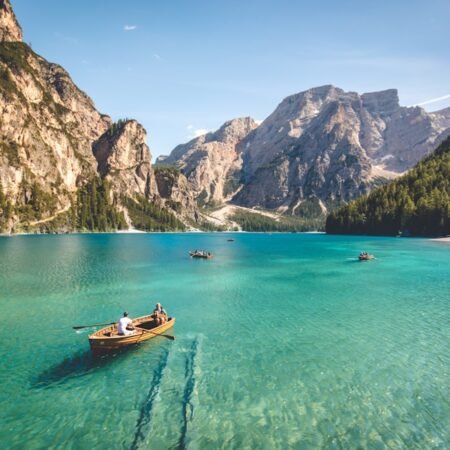When venturing into the wilderness, it’s important to understand the potential risks and hazards that come with camping. One of the most common camping accidents is falls and trips, which can result in injuries such as sprains, fractures, and cuts. It’s crucial to be mindful of your surroundings and watch your step, especially when hiking on uneven terrain or near cliffs.
Another common camping accident is getting lost or disoriented, which can lead to panic and anxiety. It’s important to stay calm and have a plan in place for navigation, such as using a map and compass or GPS device. Additionally, wildlife encounters can pose a risk, especially in areas where bears, snakes, or other potentially dangerous animals are present.
Being aware of your surroundings and following proper wildlife safety protocols can help prevent dangerous encounters. In addition to physical injuries, campers should also be aware of the risk of food poisoning and dehydration. Improper food storage and preparation can lead to foodborne illnesses, while not drinking enough water can result in dehydration, which can be dangerous in remote areas.
Understanding these common camping accidents is the first step in preventing them and ensuring a safe and enjoyable outdoor experience.
Key Takeaways
- Understanding the Risks: Identifying Common Camping Accidents
- Essential Gear and Equipment for Wilderness Safety
- Preparing for the Unexpected: Wilderness First Aid Basics
- Campsite Safety: Tips for Setting Up a Safe and Secure Camp
- Wildlife Encounters: How to Stay Safe in the Wilderness
Essential Gear and Equipment for Wilderness Safety
Having the right gear and equipment is essential for wilderness safety. A well-stocked first aid kit is a must-have for any camping trip, as it can help treat minor injuries and provide essential medical care until help arrives. In addition to a first aid kit, campers should also carry a multi-tool, flashlight, and extra batteries for emergencies.
Proper clothing and footwear are also crucial for wilderness safety, as they can protect against the elements and prevent injuries. Wearing layers, including moisture-wicking base layers, insulating mid-layers, and waterproof outer layers, can help regulate body temperature and protect against hypothermia. Sturdy hiking boots with good ankle support are also important for navigating rough terrain and preventing sprains and strains.
Other essential gear for wilderness safety includes a reliable shelter, such as a tent or tarp, as well as a sleeping bag rated for the expected temperatures. A portable water filter or purification tablets are also essential for ensuring access to clean drinking water, while a portable stove or campfire cooking equipment can help prevent foodborne illnesses by ensuring proper food preparation. By having the right gear and equipment on hand, campers can be better prepared to handle unexpected situations and stay safe in the wilderness.
Preparing for the Unexpected: Wilderness First Aid Basics
In the event of an injury or medical emergency in the wilderness, having basic first aid knowledge can be life-saving. One of the most important wilderness first aid skills is knowing how to stop bleeding and dress wounds properly. Applying direct pressure to a wound with a clean cloth or bandage can help control bleeding, while cleaning the wound with antiseptic wipes can help prevent infection.
It’s also important to know how to treat sprains and fractures by immobilizing the injured area with a splint or bandage. Additionally, knowing how to recognize and treat symptoms of dehydration, heat exhaustion, and hypothermia is crucial for wilderness safety. Another important aspect of wilderness first aid is knowing how to perform CPR and use an automated external defibrillator (AED) in the event of cardiac arrest.
These life-saving skills can help stabilize a person in a medical emergency until professional help arrives. It’s also important to know how to signal for help in the wilderness, whether it’s by using a whistle, mirror, or signaling device. By being prepared with basic wilderness first aid knowledge, campers can be better equipped to handle unexpected medical situations and stay safe in the wilderness.
Campsite Safety: Tips for Setting Up a Safe and Secure Camp
| Common Camping Accidents | Preventive Measures |
|---|---|
| Trips and Falls | Wear appropriate footwear and be mindful of your surroundings |
| Burns | Handle fire and hot objects with caution, and keep a first aid kit handy |
| Animal Encounters | Store food properly, make noise while hiking, and keep a safe distance from wildlife |
| Dehydration | Drink plenty of water and avoid excessive sun exposure |
| Weather-related Incidents | Check weather forecasts, pack appropriate clothing, and seek shelter in case of severe weather |
Setting up a safe and secure campsite is essential for wilderness safety. When choosing a campsite, it’s important to look for a flat, level area away from potential hazards such as dead trees, cliffs, or areas prone to flooding. Clearing the area of rocks, branches, and other debris can help prevent trips and falls around the campsite.
It’s also important to properly set up a tent or shelter to protect against the elements, such as wind and rain. Securing the tent with stakes and guylines can help prevent it from blowing away in strong winds. Proper food storage is also crucial for campsite safety, as it can help prevent wildlife encounters and foodborne illnesses.
Using bear-proof containers or hanging food in a bear bag away from the campsite can help deter animals from approaching. It’s also important to properly dispose of trash and food scraps to avoid attracting wildlife. Additionally, practicing fire safety by using designated fire rings or stoves and properly extinguishing fires before leaving the campsite is essential for preventing wildfires.
By following these tips for setting up a safe and secure campsite, campers can reduce the risk of accidents and enjoy a safer outdoor experience.
Wildlife Encounters: How to Stay Safe in the Wilderness
Encountering wildlife in the wilderness can be an exhilarating experience, but it’s important to know how to stay safe around potentially dangerous animals. One of the most important tips for wildlife safety is to keep a safe distance from animals and never approach or feed them. Bears, mountain lions, and other large predators should be given plenty of space to avoid provoking them.
It’s also important to make noise while hiking or camping to alert animals of your presence and avoid surprising them. Proper food storage is also crucial for preventing wildlife encounters, as leaving food unattended or improperly stored can attract animals to the campsite. Using bear-proof containers or hanging food in a bear bag away from the campsite can help deter animals from approaching.
In the event of a wildlife encounter, it’s important to remain calm and slowly back away from the animal without turning your back on it. If attacked by a bear or mountain lion, it’s important to fight back aggressively using any available tools or objects to defend yourself. Understanding how to stay safe around wildlife is essential for wilderness safety and can help prevent dangerous encounters while camping or hiking in the wilderness.
Weathering the Elements: Tips for Surviving Extreme Conditions
Surviving extreme weather conditions in the wilderness requires proper preparation and knowledge of how to stay safe in challenging environments. In cold weather, it’s important to dress in layers and wear moisture-wicking base layers, insulating mid-layers, and waterproof outer layers to protect against hypothermia. Carrying extra clothing, blankets, and emergency shelters can also provide additional protection against cold temperatures.
In hot weather, staying hydrated is crucial for preventing heat-related illnesses such as heat exhaustion and heatstroke. Drinking plenty of water and taking frequent breaks in shaded areas can help regulate body temperature and prevent dehydration. Wearing lightweight, breathable clothing and using sunscreen can also provide protection against sunburn and heat-related illnesses.
In addition to dressing appropriately for extreme weather conditions, it’s important to seek shelter during severe weather events such as thunderstorms or blizzards. Finding a sturdy building or vehicle for shelter during lightning storms or taking cover in a tent or under a tarp during heavy rain or snow can help prevent exposure to dangerous weather conditions. By following these tips for surviving extreme weather conditions, campers can stay safe in challenging environments and enjoy their outdoor adventures with greater peace of mind.
Navigating the Terrain: Staying Safe on Hiking and Backpacking Adventures
Navigating rough terrain while hiking or backpacking requires proper preparation and knowledge of how to stay safe in challenging environments. One of the most important tips for navigating the terrain is to plan your route in advance and familiarize yourself with the area using maps, GPS devices, or guidebooks. Knowing how to read topographic maps and use a compass can also help prevent getting lost or disoriented while hiking in remote areas.
It’s also important to stay on designated trails and avoid taking shortcuts through unfamiliar terrain to prevent getting lost or injured. Using trekking poles or walking sticks can provide additional stability on uneven terrain and reduce the risk of falls or trips. Additionally, wearing sturdy hiking boots with good ankle support can help prevent sprains and strains while navigating rough terrain.
In addition to proper navigation techniques, it’s important to be mindful of potential hazards such as loose rocks, slippery surfaces, or steep inclines while hiking or backpacking. Taking your time and watching your step can help prevent accidents and injuries while navigating challenging terrain. By following these tips for staying safe on hiking and backpacking adventures, campers can enjoy their outdoor experiences with greater confidence and peace of mind.
In conclusion, understanding the risks associated with camping accidents is essential for preventing them and ensuring a safe outdoor experience. Having the right gear and equipment on hand is crucial for wilderness safety, as it can help prevent injuries and provide essential resources in emergencies. Being prepared with basic wilderness first aid knowledge is also important for handling unexpected medical situations while camping in remote areas.
Setting up a safe and secure campsite is essential for preventing accidents and wildlife encounters while camping in the wilderness. Knowing how to stay safe around potentially dangerous animals is crucial for wildlife safety and can help prevent dangerous encounters while hiking or camping. Surviving extreme weather conditions requires proper preparation and knowledge of how to stay safe in challenging environments.
Navigating rough terrain while hiking or backpacking requires proper preparation and knowledge of how to stay safe in challenging environments. By following these tips for wilderness safety, campers can reduce the risk of accidents and enjoy a safer outdoor experience in the wilderness.
FAQs
What are common camping accidents to avoid in the wilderness?
Some common camping accidents to avoid in the wilderness include falls, burns, animal encounters, dehydration, hypothermia, and getting lost.
How can I prevent falls while camping in the wilderness?
To prevent falls while camping in the wilderness, it’s important to wear appropriate footwear, stay on designated trails, and be cautious when navigating uneven terrain.
What precautions should I take to avoid burns while camping?
To avoid burns while camping, it’s important to properly extinguish campfires, use caution when cooking over an open flame, and avoid touching hot surfaces.
How can I prevent animal encounters while camping in the wilderness?
To prevent animal encounters while camping in the wilderness, it’s important to store food properly, keep a clean campsite, and be aware of wildlife in the area.
What are some tips for avoiding dehydration while camping?
To avoid dehydration while camping, it’s important to drink plenty of water, avoid excessive alcohol and caffeine consumption, and be mindful of the signs of dehydration.
How can I prevent hypothermia while camping in the wilderness?
To prevent hypothermia while camping in the wilderness, it’s important to dress in layers, stay dry, and seek shelter from the elements when necessary.
What should I do to avoid getting lost while camping in the wilderness?
To avoid getting lost while camping in the wilderness, it’s important to carry a map and compass, stay on marked trails, and let someone know your planned route and expected return time.













